Chart: Prepared by GeoJango Maps
Largest Lakes Comparison Chart:
What is a lake?
Lakes are important features of the Earth's landscape and play an important role in many natural and human systems. A lake is a formation in the landscape that serves as a basin that collects and holds water. Lakes can be naturally formed by various geological and hydrological processes, such as the melting of glaciers, the movement of rivers, or volcanic activity.
Lakes can vary greatly in size, depth, and shape, and they can be found all over the world. They can also vary in their characteristics, such as their water chemistry, temperature, and the types of plants and animals that live in them.
Lakes are a valuable resource in many respects: they provide water to support life and habitates to support ecosystems. Freshwater lakes support water for drinking, irrigation, and other human uses. Lakes provide important habitats for a wide range of plant and animal species. In fact, there are over 100 million lakes covering about 4% of the Earth's surface.
Lakes can be freshwater or saltwater, natural or man made. You can find them at high altitudes and below sea level. The Dead Sea is a salt lake that is located below sealevel and at the lowest elevation on Earth (bordering Jordan and Israel).
Since there exists such a great diversity of lakes throughout our planet, it's only logical to wonder which ones are the largest. Take your best guess and then join us as we look at the 5 largest lakes in the world ranked by surface area.
1. Caspian Sea
Photo: Caspian Sea
Photo: Caspian Sea
Chart: Prepared by GeoJango Maps
Don't let the name confuse you. While the Caspian Sea has features of both a lake and a sea, it is often regarded as the largest lake in the world. From a scientific standpoint, the Caspian Sea is classified as an endorheic basin, which means that its contents don't flow to any external bodies of water.
However, this was not always the case. Studies have revealed that 11 million years ago the Caspian Sea was connected to the world's oceans via the Black Sea, the Mediterranean Sea, and the Sea of Azov. This is why the Caspian Sea is the only saltwater lake on this list while the other four are all freshwater.
Caspian Sea Statistics
- Surface Area: 143,244 sq mi (371,000 sq km)
- Shoreline Length: 4,300 mi (7,000km)
- Maximum Depth: 3,360 ft (1,025 m)
- Shoreline Countries: Azerbaijan, Iran, Kazakhstan, Russia, Turkmenistan
2. Lake Superior
Photo: Lake Superior ISS 2019
Chart: Prepared by GeoJango Maps
Lake Superior is the largest freshwater lake and the second largest lake in the world by surface area. This body of water was formed some 1.2 billion years ago through the North American Mid-Continent Rift, which almost caused the North American continent to split apart. Luckily for us, the rift failed to produce an oceanic basin and instead produced a freshwater lake that we now refer to as Lake Superior.
Today the lake is shared by two countries (Canada and the United States) and three states (Minnesota, Wisconsin, and Michigan). It is approximately 160 miles wide and 350 miles long with an average depth of 483 feet. Surprisingly enough, Lake Superior contains more water than the other four Great Lakes combined!
Lake Superior Statistics
- Surface Area: 31,700 sq mi (82,000 sq km)
- Shoreline Length: 1,729 mi (2,783 km)
- Maximum Depth: 1,333 ft (406 m)
- Shoreline Countries: Canada, United States
3. Lake Victoria
Photo: Lake Victoria
Chart: Prepared by GeoJango Maps
Lake Victoria is the largest lake in Africa, the largest tropical lake in the world, the second largest freshwater lake in the world, and the third largest lake in the world. It was originally referred to as Lake Nyanza until 1858 when British explorer John Hanning Speke discovered the lake and renamed it in honor of Queen Victoria. Speke holds the distinction of being the first European to ever reach Lake Victoria as well as being the first person to identify the lake as one of the main sources of the Nile River.
The lake is primarily located in Uganda and Tanzania, although small portions also reside in Kenya, and Rwanda. There are over 3,000 islands as well as numerous archipelagos and reefs within Lake Victoria. Of the total water volume, approximately 80% comes from direct rainfall and 20% comes from relatively small rivers that flow into the lake.
Lake Victoria Statistics
- Surface Area: 23,146 sq mi (59,946 sq km)
- Shoreline Length: 4,438 mi (7,142 km)
- Maximum Depth: 266 ft (81 m)
- Shoreline Countries: Tanzania, Uganda, Kenya
Photo: Lake Huron
Chart: Prepared by GeoJango Maps
4. Lake Huron
Lake Huron is the third largest freshwater lake and the fourth largest lake in the world. This body of water is home to Manitoulin Island, which is the largest freshwater lake island in the entire world. In fact, Manitoulin itself contains over 100 lakes. Lake Huron is also home to the historic Mackinac Island, which can be found on all of our USA Maps.
The lake was first visited by Europeans, specifically the French, sometime in the 17th century. While it was originally referred to as La Mer Douce/The Fresh-Water Sea, the name was eventually changed to Lake Huron in reference to the Iroquoian-speaking natives that once populated the region surrounding the lake.
Lake Huron Statistics
- Surface Area: 23,007 sq mi (59,588 sq km)
- Shoreline Length: 1,850 mi (2,980 km)
- Maximum Depth: 750 ft (229 m)
- Shoreline Countries: Canada, United States
5. Lake Michigan
Photo: Lake Michigan NASA ISS April 10 2022
Chart: Prepared by GeoJango Maps
Lake Michigan is the fourth largest freshwater lake and the fifth largest lake in the world ranked by surface area. It's also the only Great Lake to be located entirely in the United States. The name of this lake, and indeed the state as well, is thought to originate from the native Ojibwe word "michi-gami", which means great water.
Oddly enough, Lake Michigan is actually connected to Lake Huron via the Straits of Mackinac on its northern end. While this technically means that the two are the same lake, they are usually regarded as separate bodies of water.
Lake Michigan Statistics
- Surface Area: 22,404 sq mi (58,030 sq km)
- Shoreline Length: 1,400 mi (2,300 km)
- Maximum Depth: 923 ft (281 m)
- Shoreline Countries: United States
The Deepest Lake In The World And Largest By Volume: Lake Baikal
Photo: Lake Baikal
Chart: Prepared by GeoJango Maps
Lake Baikal Statistics
- Surface Area: 12,248 sq mi (31,722 sq km)
- Shoreline Length: 1,300 mi (2,100 km)
- Maximum Depth: 5,387 ft (1,642 m)
- Shoreline Countries: Russia
Text
Find These Lakes On Our World Travel Maps
Our World Travel Maps are incredibly unique. Designed by a professional geographer & cartographer, these maps feature incredible details that will inspire you to get out and explore the world.
Within our World Maps you can find the largest lakes in the world, the tallest peaks on every continent, the deepest point in each ocean, and much more. We also feature fascinating travel destinations to help you plan your next adventure. Hang one up in your home or purchase one as a gift for someone who loves to travel!
As a special thank you for reading this article, we're offering a discount code of 5% off any World Map Poster! Just enter the code "WORLDPOSTER" during checkout to receive your special discount.
Related Blogs:

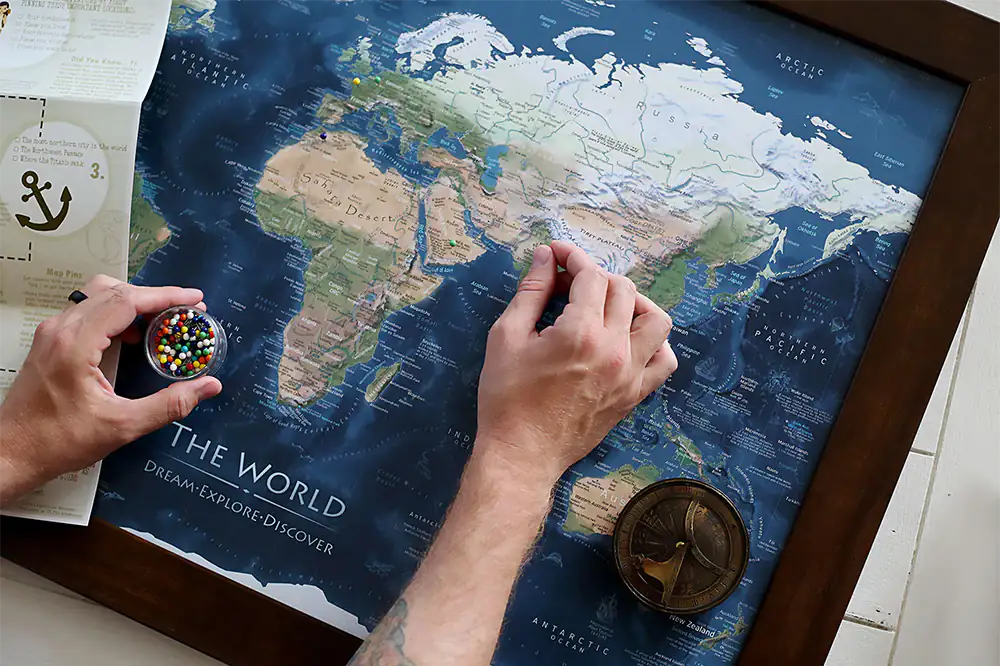


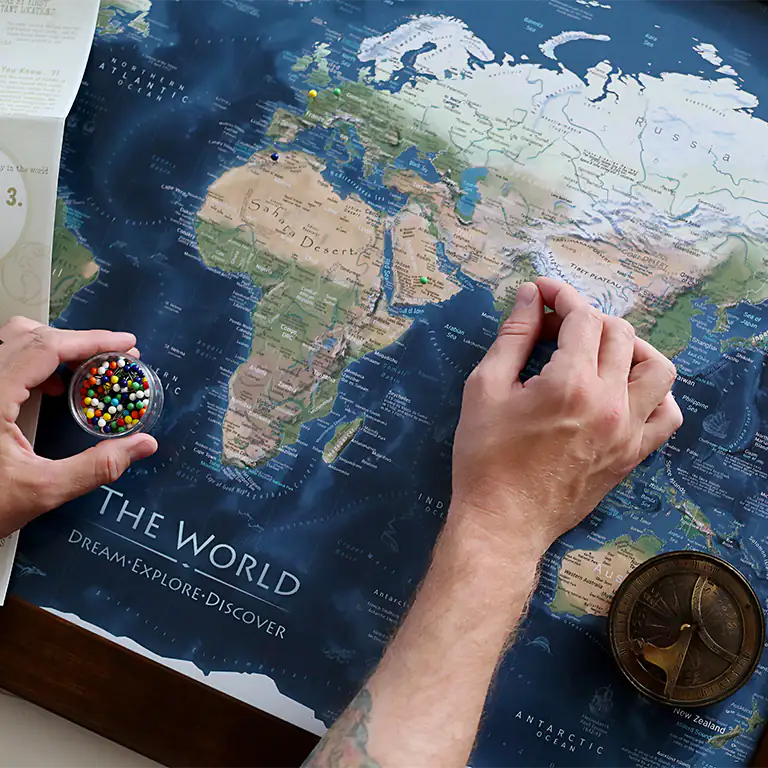
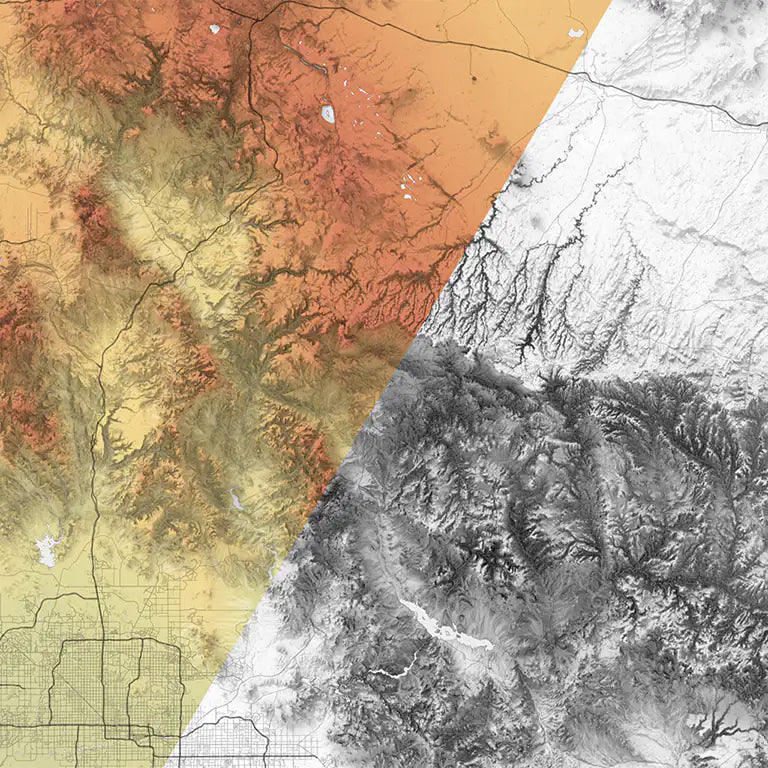


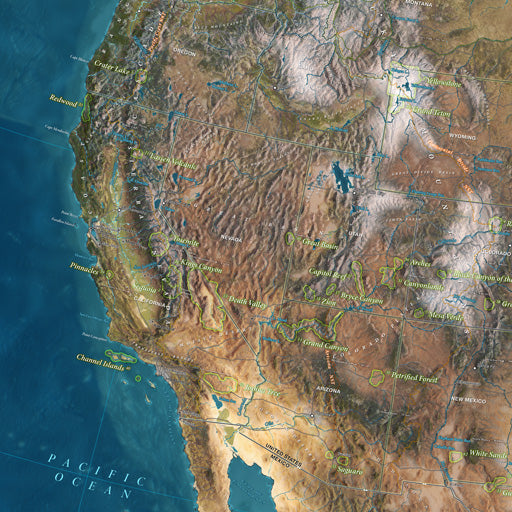
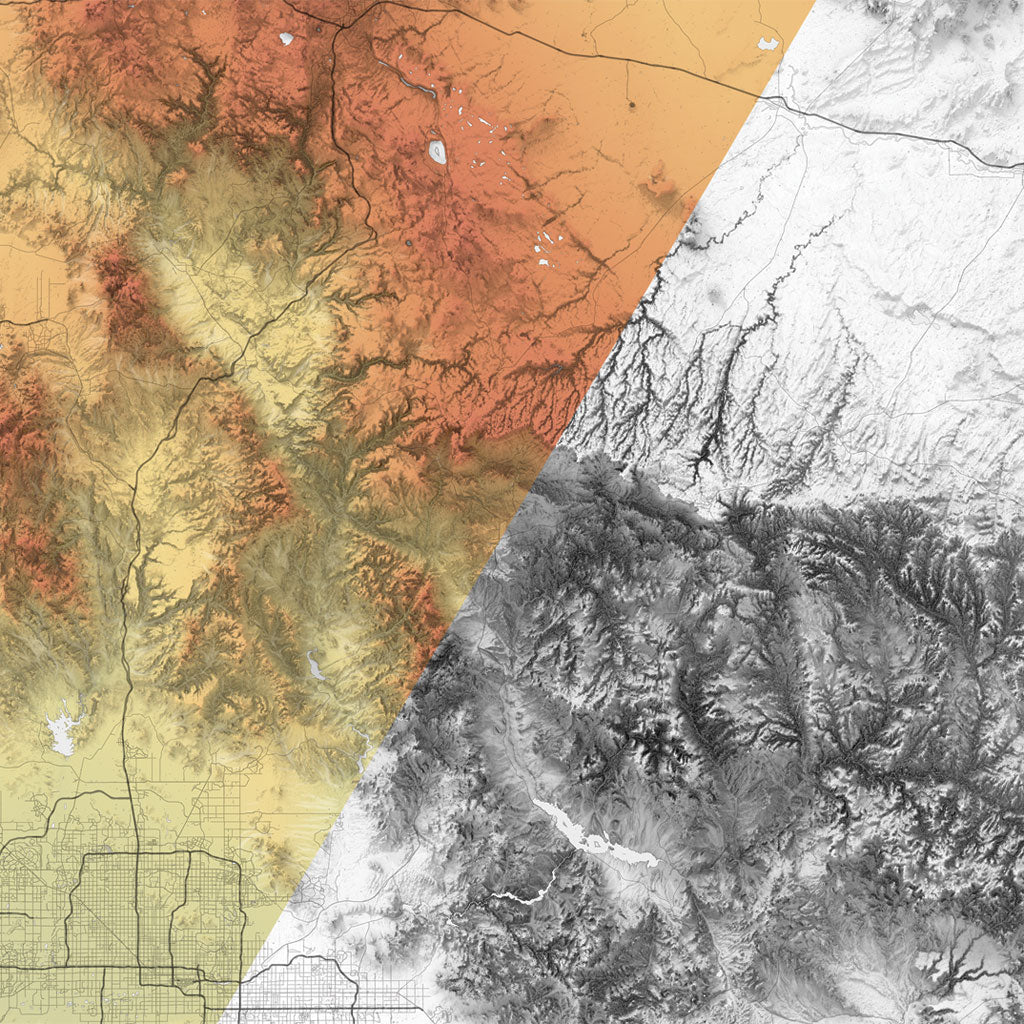

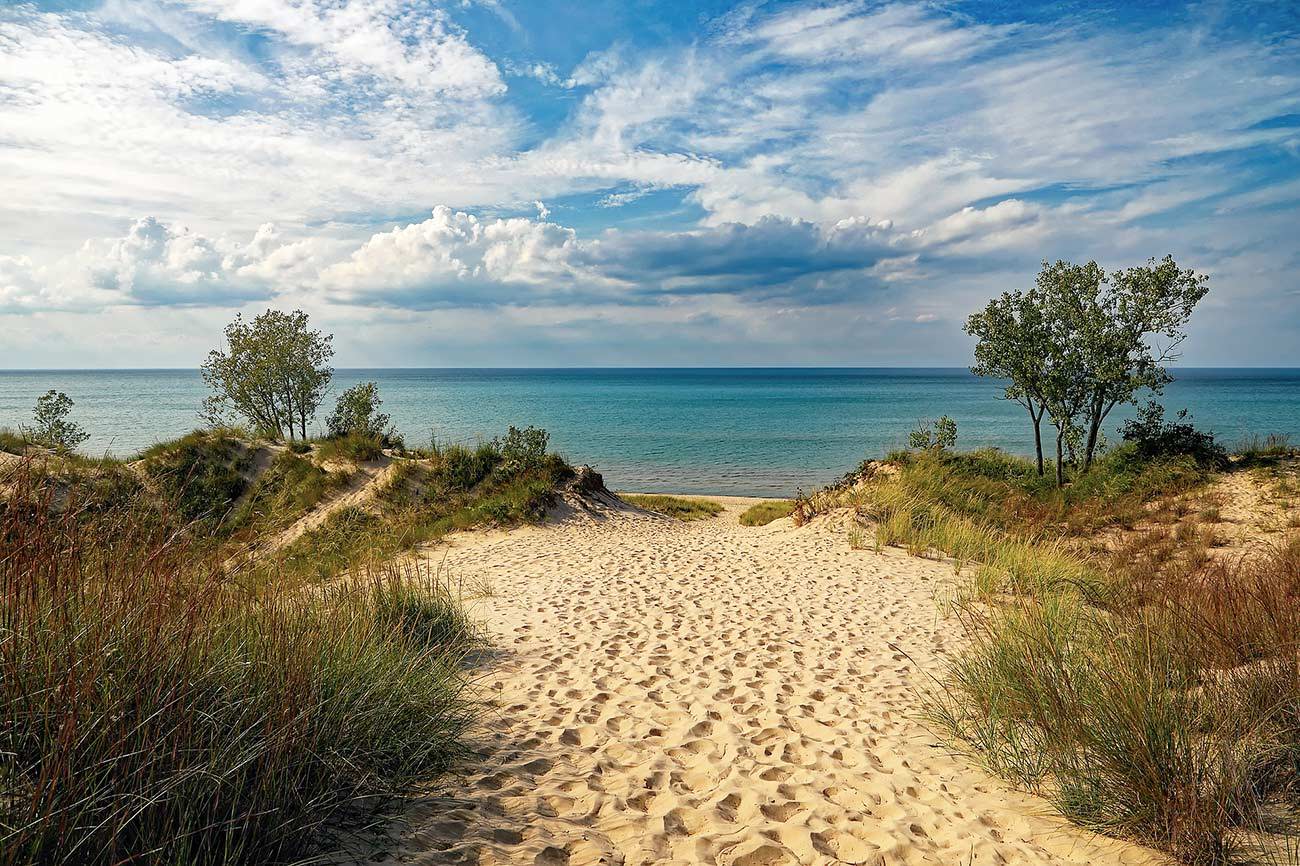
Comments
Where does Okeechobee rank, as far as size?
That’s crazy that the Caspian Sea is technically a lake! I would have never guessed. Also interesting that three of the five largest lakes in the world are all in the United States.
Lake Victoria was a surprise!